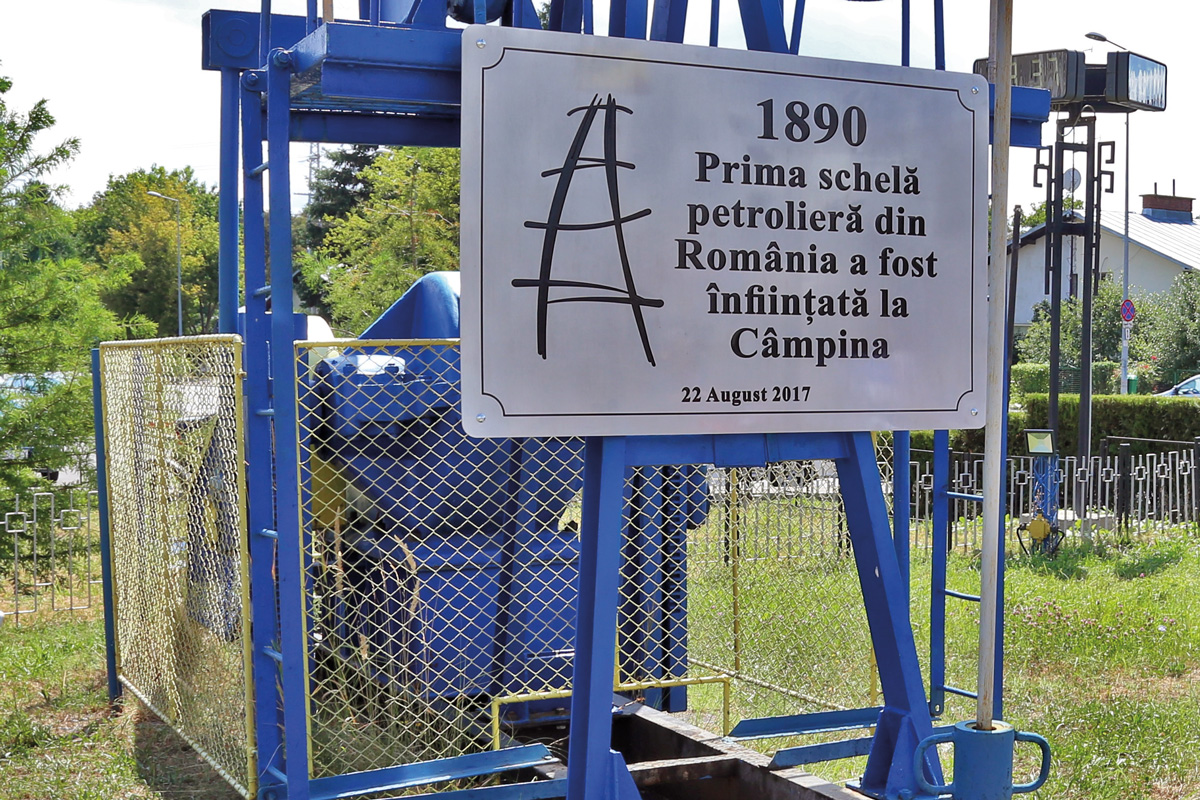113 years since the founding of world’s first School for Drilling and Refining Foremen
The events included in the “Romania 100” National Programme – Prahova, 2017 – World Petroleum Capital, have continued with an anniversary event dedicated to the founding of the Drilling and Refining Foremen School in Campina, in 1904, a world premiere. Thus, on August 22, a symposium took place at Campina’s Youth House, marking 113 years since the first such institution in the world was established. The event was attended by local authorities, academics and former employees of the economic units in the oil industry in Campina. On this occasion, Prof. Mihail Minescu PhD – the Chairman of the organizing committee, Vice-rector of Petroleum-Gas University (UPG) Ploiesti – and Mayor Horia Tiseanu have awarded diplomas of excellence and, in the end, have unveiled a memorial plaque on the pumping equipment in front of the Youth House, which remind the establishment in 1890 of the first oil scaffolding in Romania.
According to the information published on the website of the National Information and Tourism Promotion Centre in Campina, the Drilling and Refining Foremen School in Campina was the first of its kind in the world. The institution operated for a while in the current headquarters of the City Hall, known as the House of Griffins. The building was built in 1901-1902 by Gheorghe Stefanescu, a Campina native, being the first electrified building in the locality. Gheorghe Stefanescu was a prosperous businessman in the petroleum sector and, after World War I, he donated the House of Griffins to the Drilling and Refining Foremen School, founded in 1904 in Campina and named after the well-known oil engineer Constantin Alimanisteanu.
Constantin Alimanisteanu, director within the Ministry of Mining, Industry and Trade at that time, requested the government and business people in the petroleum industry to support the opening of a school for drilling foremen in Campina – the country’s most important petroleum centre at the time. Alimanisteanu mentioned that the school initiated by Steaua Romana (Romanian Star) with private interest, failed only after two years because “many young people trained here have moved to other enterprises.” He added that Steaua Romana had a good start with the engineers, but the example must be continued and expanded with all categories of staff and to all other companies.
Among the first teachers of the school are mentioned some important personalities of Romanian science and technique of the period: Professors Ludovic Mrazec (1867-1944) and Gheorghe Munteanu Murgoci (1872-1925) in geology, engineers Constantin Barbacioru (mathematics) and Virgil Tacit (drafting).
The school is praised by Constantin Alimanisteanu in 1906, on the occasion of the celebration of 40 years of oil industry in Romania, which believed that “the future drilling foremen of our enterprises will ease our exploitation from the difficulties that prevent a thorough prosperity for our country’s industry.”
The training of the middle and lower technical staff in the oil industry continued its expansion in the following years, so that in 1907 a new chair of physics, mechanics, electro-technique and topography was set up, and in 1908 was established a new chair of steam boilers, machinery and engines.
During 1906-1915, some 311 drilling foremen graduated, during 1916-1918 the courses were interrupted, due to World War I. During the conflagration both the old school’s building and the entire teaching material were destroyed, so that when the school was reopened in 1919, the courses were held in the City Hall building.
In 1919, a new building was purchased for the Drilling Foremen School, functional until its dissolution.
The technical lower and medium oil and mining education was reorganized after 1945, when, by Law 145, the needs of the oil industry were provided by two schools: one in Ploiesti and another one in Moreni. These centres were chosen because the oil industry was in decline in Campina, well below the works of its neighbouring rivals.
The beneficial results of the school set up by Constantin Alimanisteanu were seen after 33 years, in 1937, when the drillings were done by Romanian staff only.
Source: Drilling and Refining Foremen School in Campina (1904-1950), Magdalena Banu PhD – Scientific researcher, National Oil Museum Ploiesti







